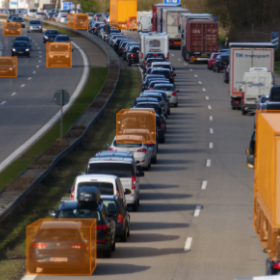

Bounding Boxes and 3D Cuboids Annotation Services
The Power of Bounding Boxes and Frames in 3D Cuboids Annotation Services
Welcome to SmartOne.ai, your trusted service provider for AI data labeling and annotation services. As your reliable partner, we offer a scalable Workforce as a Service, ensuring 24/7 support and meeting all your internal project deadlines.
What are Bounding Boxes and Frames?
Bounding boxes and frames are annotation techniques used in computer vision and machine learning to define the spatial extent of objects within images or video frames. They are rectangular or cuboid regions that encapsulate objects of interest, providing crucial information for various tasks, such as object detection, tracking, and localization.
Importance of Accurate Image Annotation in Machine Learning
Accurate image annotation is important for training your machine learning models. Precise data annotations enables your AI algorithms to detect and recognize objects with higher accuracy, leading to improved decision-making, automation, and enhanced user experiences for your customers.
Benefits of 3D Cuboid Annotation Services
By leveraging our 3D cuboid annotation services at SmartOne, you can unlock several key benefits:
- Accurate Object Detection and Recognition Results: Our skilled annotators meticulously label objects with 3D cuboids, providing data that ensures your AI models achieve precise and reliable object detection and recognition.
- Ground Truth Datasets Creation for AI Models Training: We assist in creating high-quality datasets, enabling effective training of your AI models for various applications, including autonomous driving, robotics, and virtual reality (VR).
- Automation in the Annotation Process: Our annotation platform and expert workforce enable efficient and scalable annotation workflows, reducing manual efforts and maximizing productivity to provide you the greatest results.
Understanding Polyline Annotation and its Applications in Machine Learning
Polyline annotation, also known as connected line segment annotation, finds applications across various industries. Here are a few popular use cases we support our customers with:
- Enhancing Efficiency in Autonomous Driving with 3D Cuboids Annotation
- Unlocking Precision in Virtual Reality Development through Bounding Boxes and Frames
- 3D Cuboids Annotation in Robotics and Automation
- Leveraging 3D Cuboids Annotation for Accurate Object Localization
FAQs
How are companies doing 3D cuboid annotations?
Companies often partner with professional data annotation service providers, like SmartOne.ai, because we have skilled annotators and specialized tools to perform accurate 3D cuboid annotations based upon your custom needs. This ensures high-quality training data for all your machine learning models.
What are the advantages of outsourcing 3D cuboid annotations?
Outsourcing 3D cuboid annotations offers several advantages. It saves time and resources for your team, provides access to expertise and scalable annotation workforce, ensures high-quality annotations, and of course enables your team to focus on other core activities managing your AI projects.
Benefits of 3D Cuboid Annotation Services?
The benefits of 3D cuboid annotation services include accurate object detection and recognition results, ground truth dataset creation for AI model training, and automation in the annotation process. By leveraging a trusted service provider like SmartOne, you can enhance the performance and reliability of your 3D object detection and localization algorithms quickly, efficiently and of course cost effectively.
What are some challenges faced in the annotation process of 3D cuboids?
The annotation process of 3D cuboids presents challenges such as adjusting box size manually for different objects, dealing with occlusion or overlapping objects, ensuring consistency across annotators, and accurately capturing object dimensions and positions in complex scenes. These challenges require expertise and attention to detail to produce high-quality annotations which are team has a lot of experience with.
What types of bounding boxes and frames are there?
There are different types of bounding boxes and frames used in annotation: 1) 2D Bounding Boxes: These are rectangular boxes that outline the 2D extent of an object in an image or video frame. 2) 3D Cuboids: These are 3D boxes that enclose the spatial extent of objects, providing information about object dimensions and positions in 3D space. 3) Video Frame-based Annotations: These annotations are specific to individual frames in a video, allowing precise tracking and analysis of objects over time.
Need help with Bounding Boxes and Frames in 3D Cuboids Annotation Services?
At SmartOne.ai, we are committed to delivering quality with accuracy, security with privacy, competitive pricing, and a scalable workforce as a service. Contact us today to discuss your data labeling and annotation needs.








